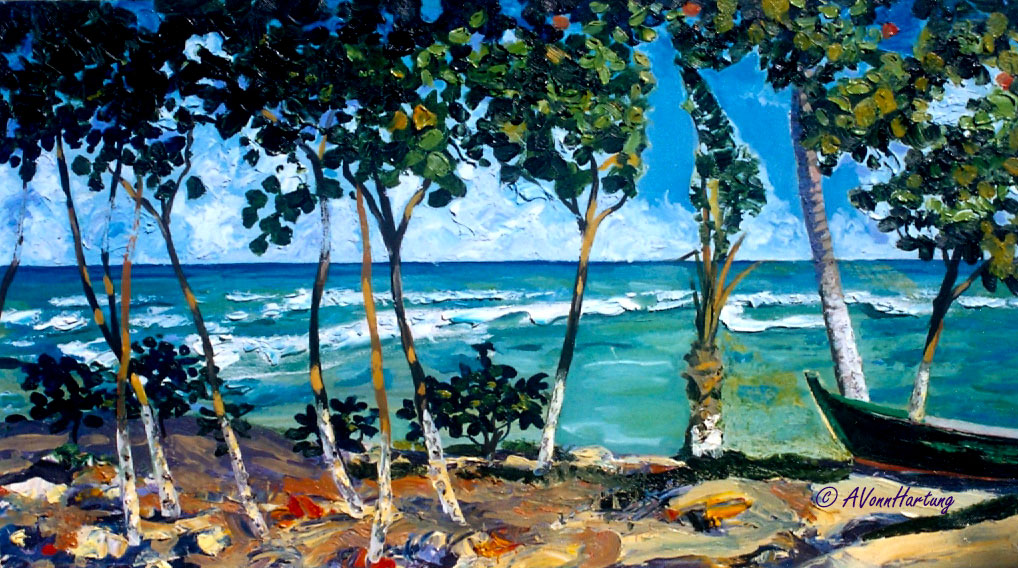(Scroll down for Spanish text)
Today is Earth Day. What better moment to pay homage to the noble “El Jíbaro Puertorriqueño”, the Puerto Rican cultural icon!
“El Jíbaro” symbolizes to me the “salt of the Earth”
“El Jíbaro“Oil portrait by A.Vonn Hartung
“El Jibaro Puertorriqueño” is a painting inspired by my neighbors who have cultivated the land of their ancestors from the beginning.
Don Pepe represents for me all those who still cultivate the land; living links to our past, sustenance today, and hope for abundance and sustainability in the future.
He represents, on the one hand, the constant battle between the so-called permanence of concrete and asphalt, which is quickly engulfing our fertile land and drying up our lakes and rivers due to urban sprawl and the overwhelming dominance of the automobile as a symbol of impoverished planning.
And on the other hand, the stability and sustainability through cosmic spirituality, which, along with intact families, are our guarantee of a healthy, harmonious continuity, which must offset the suicidal (or more aptly expressed, planeticidal*) race to deplete our natural resources.
*the killing of our own planet
This painting was inspired by my neighbor Don Pepe “el Múcaro” (the Owl) O’Neill, whom I am proud to call my friend. May he rest in peace!
(16″x20″ oil portrait, artist’s collection)
Buy a giclee print of this painting
******************************************
Español
El Jíbaro
Hoy es “Dia de la Tierra” ¡Que mejor momento para rendir homenaje al noble “El Jíbaro Puertorriqueño“, el icono cultural puertorriqueño!
“El Jíbaro” simboliza para mi la “sal de la tierra”
“El Jíbaro Puertorriqueño” es una obra inspirada por mis vecinos que han cultivado la tierra de sus antepasados desde el principio.
Don Pepe representa para mí todos los que todavía cultivan la tierra; vínculos vivientes con nuestro pasado, sostenimiento hoy y esperanza de abundancia y sostenibilidad para el futuro.
Él representa, por un lado, la batalla constante entre la supuesta permanencia de hormigón y asfalto, que envuelva rápidamente nuestra tierra fértil y seca nuestros lagos y ríos debido a la expansión urbana y el abrumador dominio del automóvil como símbolo de la empobrecida planificación.
Y por otro lado, la estabilidad y sostenibilidad a través de la espiritualidad cósmica que, junto con las familias intactas, son nuestra garantía de una continuidad sana y armoniosa que debe contrarrestar la carrera suicida (o mejor expresada, planetacida*) por agotar nuestros recursos naturales.
*la matanza de nuestro propio planeta
Esta pintura está inspirada en mi vecino, Don Pepe “el Múcaro” O’Neill, a quien me enorgullece llamar amigo. ¡Que en paz descanse!
(“El Jíbaro” es un retrato en óleo 16″ x 20″, colección del artista)
